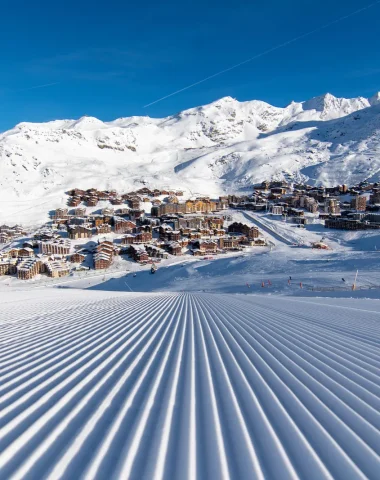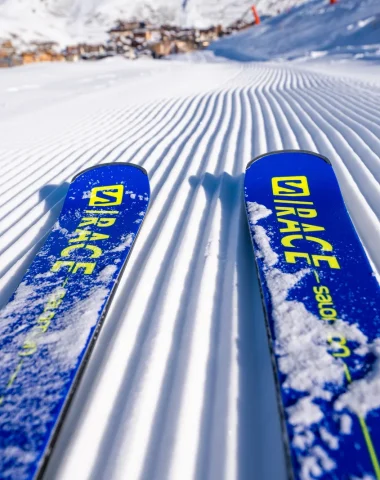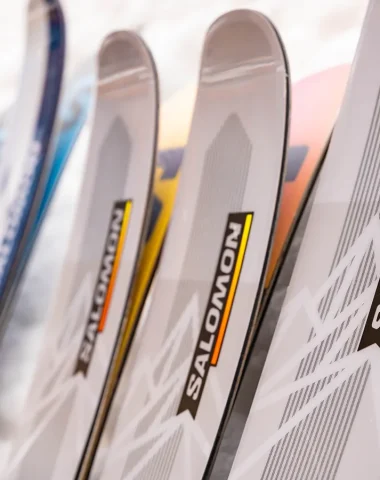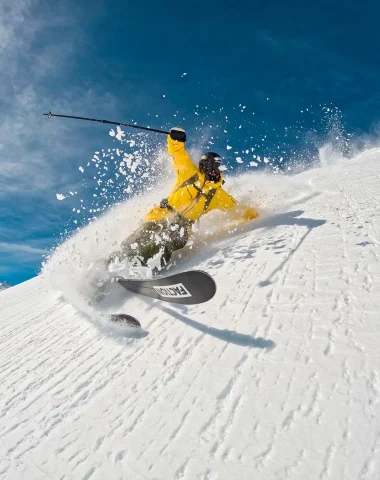It's time to discover a new article on ski equipment with today, everything you need to know about maintaining your on-piste skis.
And yes, in order to be able to fully enjoy the 3 Valleys ski area, it is still more pleasant to have skis in good condition, thus providing better sliding sensations.
How to repair the base of skis
It's never pleasant to turn your skis over at the bottom of a slope and discover scratches and/or holes caused by stones sneakily hidden under the snow.
Here's how to simply repair the sole of your skis or snowboard.
- First of all, you must clean the soleplate to remove dust and impurities. For this, I recommend a brush made of copper, bronze or steel wire.
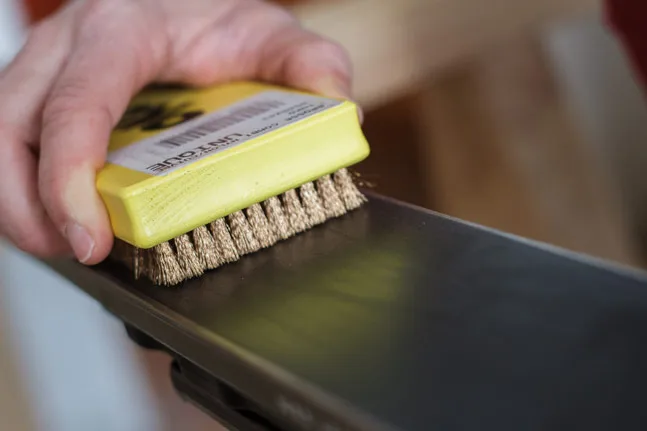
- As with all operations to be carried out on the sole, you must always proceed in the same direction, that of sliding, from the tip of the ski towards the tail.
- Once clean, we can move on to the sole repair phase. For this step, you need to buy repair sticks, get a lighter and a metal scraper.
- The sticks are available in black or transparent to make the repair less visible afterwards. For my part, I recommend black, which will hold up better over time.
- Using the lighter, ignite one end of the stick until the first drops begin to flow, then bring the stick close to the area to be repaired, let a few drops fill the damaged part.
- Leave to cool for a few seconds then scrape off the excess with the scraper to obtain a smooth and uniform surface with the rest of the ski base.
Note: However, this repair technique only applies to small holes or scratches; for significant damage, it is often necessary to carry out a patch (complete replacement of part of the sole).
Sharpen your edges
The easiest solution for maintaining your edges is to use a sharpener. It allows you to use several files (more or less aggressive) and to choose the edge sharpening angle.
For an edge to grip on the snow, you must always keep an angle of 90° or less.
As we sharpen both sides of the edge, on the sole side (we say fall the edge) and on the edge side, we can vary the inclinations of each side. So many possibilities to vary the angle of the edge!
Sharpening is done over the entire length of the edge for uniform wear since on modern skis, the entire length of the edge is used for turning. There is no mandatory direction for sharpening, but I recommend pulling towards you rather than pushing, and it is not necessary to press very hard on the file.
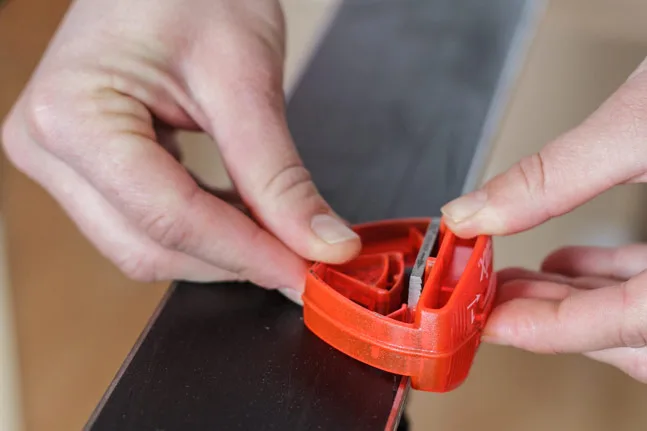
Note: On the edge side, the lower the angle, the faster the entry into the turn occurs but more strength is required in the legs to keep the ski in the curve. I also advise you to un-sharpen the first few centimeters at the tip to make it easier to enter a turn.
For those who want more precision when sharpening, it is preferable to use a “square/clamp” system instead of a sharpener, but it is much more difficult to use.
Wax your skis
Last step, but oh so important, waxing your skis. This serves to improve gliding on snow and protects the sole. As for a repair, it is necessary to clean the sole well before starting and working in the direction of sliding. (Spatula > heel)
There are several methods for waxing (hot, liquid, powder, pencil) but I recommend using a hot wax which is applied with an iron (there are waxing irons but an old iron does the job perfectly. Take an iron preferably without a hole). This type of wax is much more effective and durable.
You will see that there are also a multitude of waxes depending on the temperature (cold snow, spring, etc.) and the practices (leisure or competition), but you can always opt for a universal wax for greater simplicity.
- Place your skis on trestles with the sole upwards, use large rubber bands to release the ski stops and work more freely.
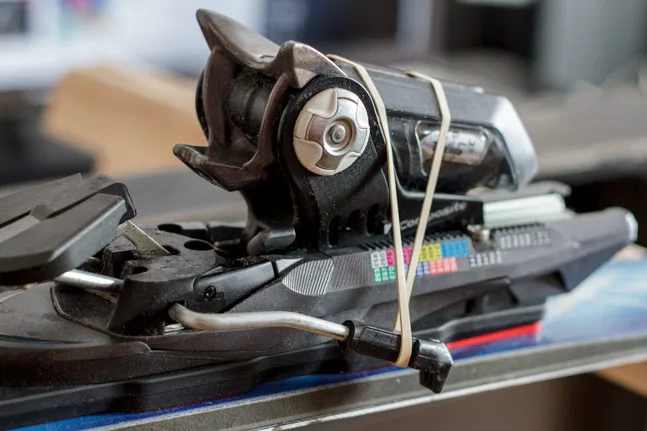
- Melt the wax in droplets all along your ski by putting it in contact with the sole of the iron.
- Slowly distribute the wax with the iron over the entire surface of the sole (from the tip to the heel). You should never leave the iron in the same place for too long, or worse, completely stationary on your skis because you risk irreparably damaging the sole of your skis.
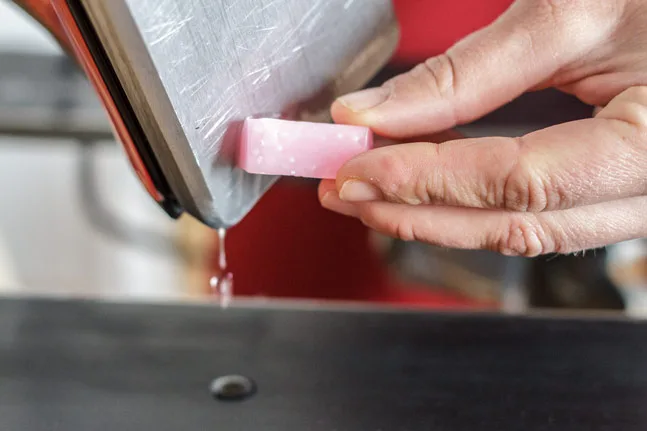
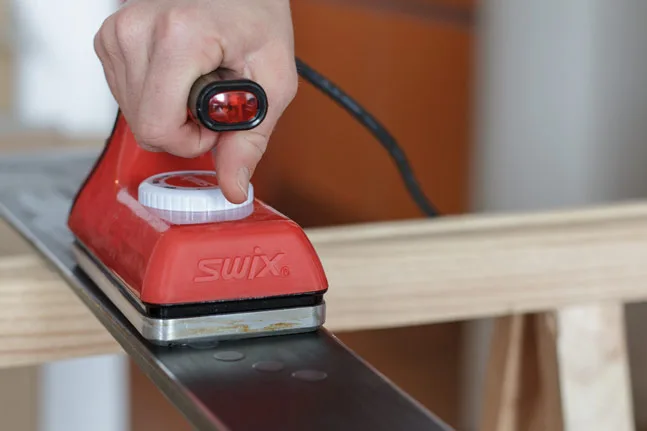
- Once finished, it is important to wait for the wax to soak into the base and cool down. For it to be effective, I recommend that you wait an hour before starting to scrape.
- Finally, scrape off all of the wax, then brush vigorously with a nylon brush for a good finish.
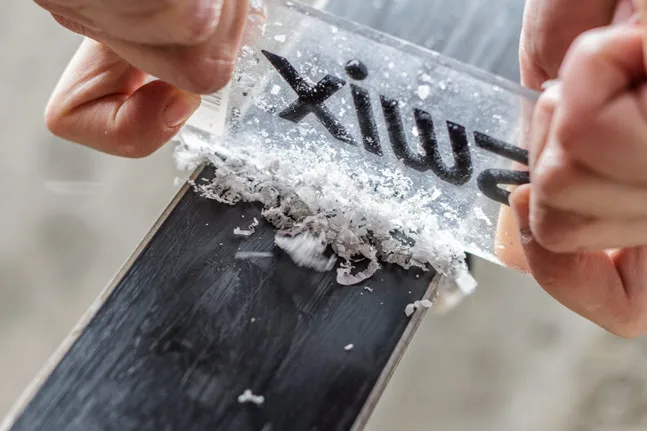
Your skis are now ready to hit the slopes!
Tip: At the end of the season, wax your skis but without scraping in order to protect and nourish the sole during storage. Be careful, however, not to leave wax on the edges to let them “breathe” and thus avoid rust.
See also how to choose your skis depending on your level, your practice (on slopes or off-piste) and your body type.
Themes





